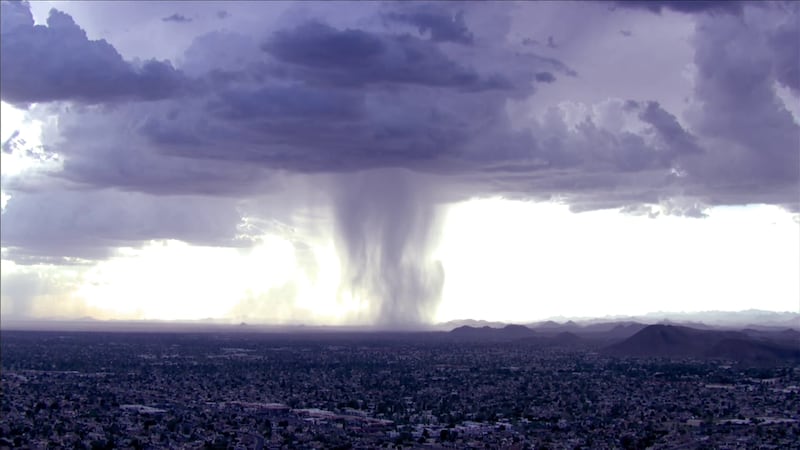What are microbursts? Here’s how they form
PHOENIX (AZFamily) — It appears several microbursts hammered parts of the Valley Wednesday night, leading to downed trees, power outages, and other damage in the Phoenix metro area. But how do microbursts form?
Like many destructive events from Mother Nature, it starts with a thunderstorm. As air rises in thunderstorm updrafts, water droplets and sometimes hailstones will form. Some of the water droplets and ice can end up falling as rain or hail, but some also evaporates.
The evaporation process cools the surrounding air. Since cooler air is more dense than warm air, the cooler air can sink rapidly towards the ground.
Once the downdraft slams into the ground, it spreads out rapidly in all directions. This can produce what are known as “straight-line winds,” which can cause considerable damage.
Technically, a microburst produces a burst of strong winds on the earth’s surface less than 2.5 miles wide. If the burst of wind is larger than 2.5 miles wide, it is considered a macroburst.
Microbursts can produce wind speeds up to 100 mph, sometimes even higher. Keep in mind that 100 mph is equivalent to an EF1 tornado.
Here in Arizona, microbursts are more common than tornadoes. One of the reasons for this is the dry air often in place in the mid-levels of the atmosphere here in Arizona. This mid-level dry air is one of the ingredients that can help fuel microbursts.
See a spelling or grammatical error in our story? Please click here to report it.
Do you have a photo or video of a breaking news story? Send it to us here with a brief description.
Copyright 2024 KTVK/KPHO. All rights reserved.








